With museums and art galleries across the world closed to the public, now seems like a good time to introduce a little virtual museum created just for Fantasy-Faction. Presenting: The Museum of Magical Miniatures! A museum of the mythical, the weird, and the fantastical.
In Gallery One we have three miniatures from three different continents.
Lewis Chessman Berserker
Origin
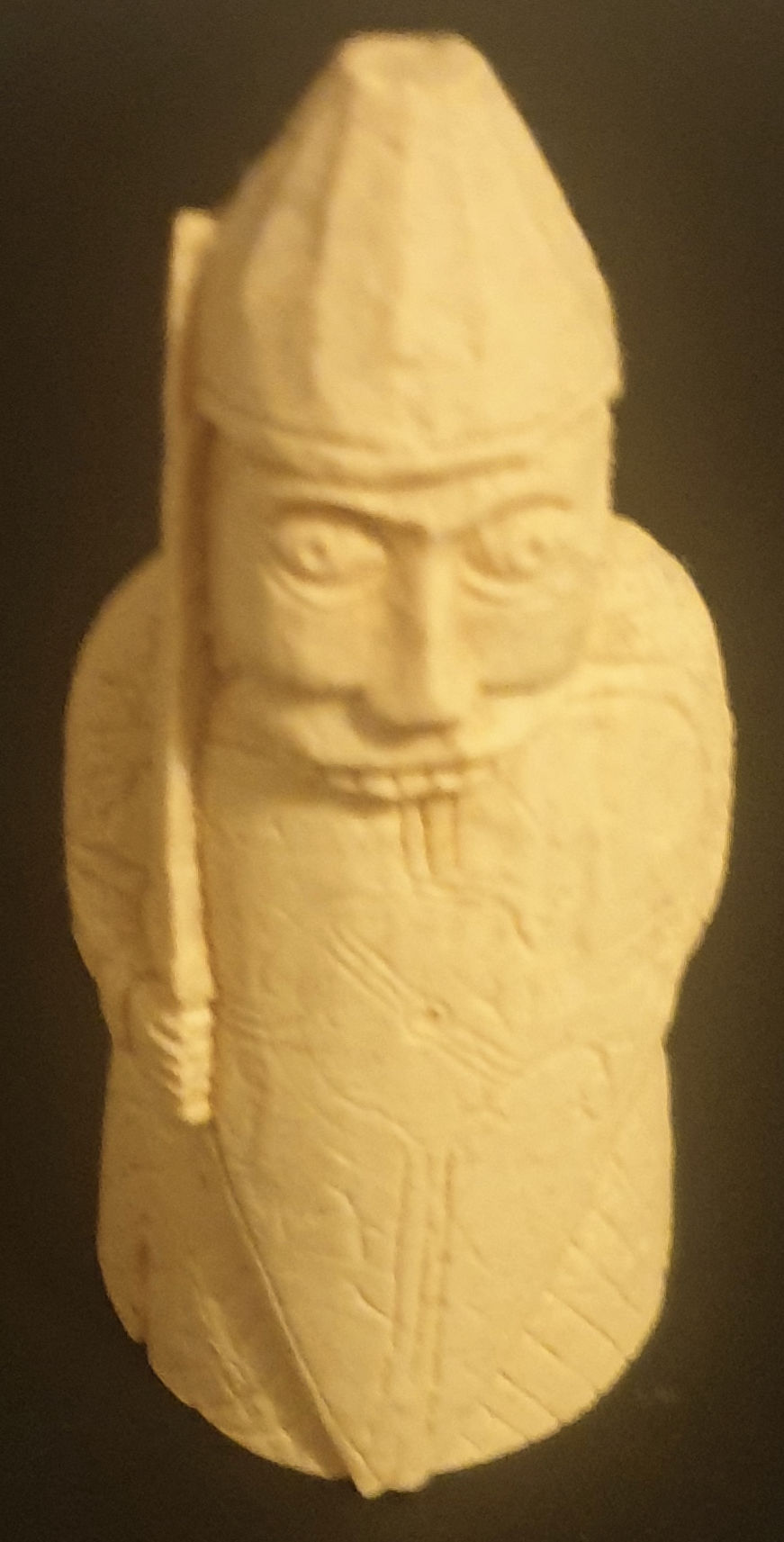 The
original figures were discovered on the Scottish Isle of Lewis. Most of them
had been carved from walrus ivory and are believed to be of Nordic origin. They
likely date from around the 12th Century.
The
original figures were discovered on the Scottish Isle of Lewis. Most of them
had been carved from walrus ivory and are believed to be of Nordic origin. They
likely date from around the 12th Century.
Appearance
This piece is shown gnawing on his shield, a traditional sign of a berserker’s battle frenzy.
Mythology
Different interpretations of the berserker have emerged throughout history and no one can quite agree on what they were. The word berserk may mean bear-shirt, suggesting a warrior who went into battle wearing a bearskin. They have been associated with the cult of the bear, a warrior society some archaeologists theorise was once common across ancient Europe and beyond.
Berserkers could simply have been champions; in the Norse sagas they are often described as the honour-guards and chosen warriors of kings, fighting off whole armies almost single-handed. The practices of howling, biting their shields and foaming at the mouth before a fight may have been a way of psyching themselves up for battle or could have been the result of drugs taken to incite frenzy.
Other stories give the berserker more mythical qualities. They were said to enter into a terrible battle rage called berserkergang or hamrammr, which made them completely fearless and nearly unstoppable, yet tragically unable to tell friend from foe. A berserker in the throes of hamrammr would have a red face and distorted features and would fight like a demon, showing neither fear no mercy.
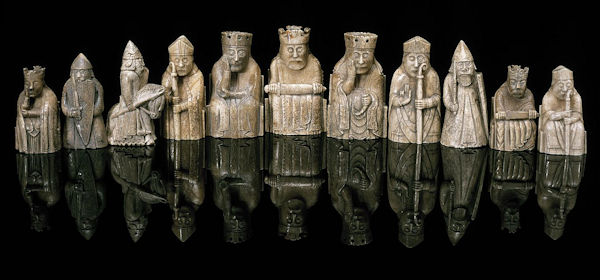
Some sagas attribute even stranger powers to the berserker—inhuman strength, immunity to fire, iron, and edged weapons and even the ability to change their shape. (Clubs and maces could still kill them though.) One berserker, Bödvar Bjarki, was described as being able to send his spirit forth in the form of a mighty bear that fought alongside his king.
Other Norse warriors associated with animal cults were the Ulfhednar—wolf-warriors and the Svinfylking—boar-warriors.
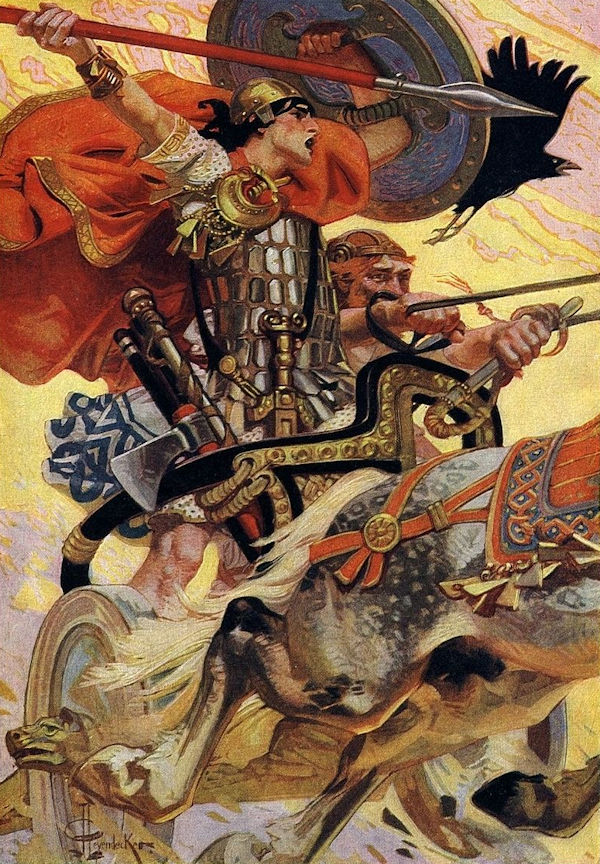 Wolf-warriors
behaved much like bear-warriors and are often described as berserkers. They
were considered to be the chosen men of Odin and were perhaps inspiration for
the novel Wolfsangel and its sequels. The Svinfylking were said to be
incredibly strong and to fight at the forefront of a battle formation called
the boar’s head. They were also believed to be masters of disguise and the
landscape.
Wolf-warriors
behaved much like bear-warriors and are often described as berserkers. They
were considered to be the chosen men of Odin and were perhaps inspiration for
the novel Wolfsangel and its sequels. The Svinfylking were said to be
incredibly strong and to fight at the forefront of a battle formation called
the boar’s head. They were also believed to be masters of disguise and the
landscape.
A warrior who becomes unbeatable, but also uncontrollable in battle, is a common idea in Western mythology.
In Celtic mythology, the hero Cú Chulainn was said to fall into a warp spasm, which gave him monstrous strength but stripped him of the ability to tell friend from foe. The warp spasm also distorted Cú Chulainn’s body in hideous ways, one eye would retreat into its socket, the other would dangle down his face, his feet would turn backwards and his mouth would gape open until his lungs could be seen flapping in his gullet.
The Greek hero Heracles also had a habit of going so mad with rage that he killed everyone around him—guests, family members, enemies, friends and even lovers. The Maenads, maddened female followers of the god Dionysus, also killed indiscriminately at times and were said to be immune to fire and steel when the divine frenzy was upon them, an eerie echo of the berserker’s powers.
Jin Chan also known as a Money Toad
Origin
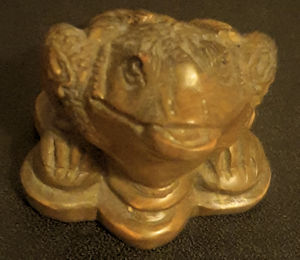 Traditional Chinese good luck charm.
Traditional Chinese good luck charm.
Appearance
A wooden figure of a three-legged toad sits upon a pile of traditional Chinese coins and greedily holds one in its mouth.
Mythology
The Jin Chan or Golden Toad is a popular good luck charm used in the practice of Feng Shui.
Placing the figure so it faces the main door of a building is said to bring wealth and prosperity to that household. It should never be placed in a bathroom, bedroom, dining room or kitchen, though our research has not revealed what the consequences of such a transgression would be. Spirits of prosperity, Jin Chan are also lunar symbols and are said to appear during a full moon. Any nearby households or businesses will be blessed with good fortune in the form of wealth or financial success.
Liu Haichan, a Taoist immortal and internal alchemist said to have been born in the 10th Century, was often represented carrying a Jin Chan. He is now considered an embodiment of Caishen, the god of wealth.
The story goes that in his mortal life, Liu Haichen rose to the rank of Prime Minister of the Khitan Empire. He was converted to Taoism by a monk called Zheng Yangzi, (actually the Immortal Zhongli Quan in disguise). Zheng Yangzi visited Liu Haichen and asked him to balance ten eggs on top of each other, with a gold coin between each one.
Liu Haichen exclaimed, “How dangerous!”
The monk smiled and replied, “The position of a Prime Minister is much more dangerous!”
These words struck a deep chord in Liu Haichen, changing the course of his life in an instant. He renounced his wealth, resigned his position, and became a wanderer, seeking and ultimately achieving the state of immortality.
Liu Haichen joined other Taoist immortals in travelling the world and encouraging others to follow their path. At night, his Jin Chan was said to produce a pearl, which if swallowed, would bring a corpse back to life or transform a living person into an immortal. Perhaps this curious pair wander the world still.
Money has other supernatural associations in Chinese myths and folklore. During the annual Zhongyuan Jie, or Ghost Festival, when spirits of the dead are believed to walk the Earth, people in China and some other parts of East Asia burn paper money created specifically for the dead. The ghosts are believed to receive this money and be able to spend it on comforts and goods in the afterlife. They can also use this cash to bribe the bureaucrats of Diyu (Hell) to shorten their sentence and speed their soul on its journey into reincarnation or Heaven. These ideas have found their way into urban fantasy through novels such as The Girl with the Ghost Eyes and The Ghost Bride.
Chibi Cthulhu
Origin
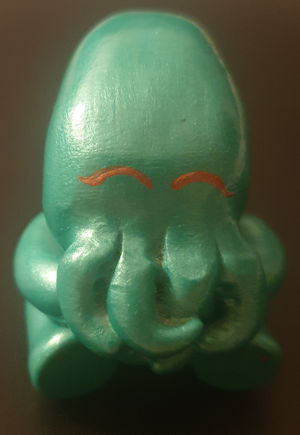 A rare Clay
Doodle created by an artist known as JB. JB has since closed up her online shop
and disappeared from the public eye. Wherever she is now, we hope she is safe
and well.
A rare Clay
Doodle created by an artist known as JB. JB has since closed up her online shop
and disappeared from the public eye. Wherever she is now, we hope she is safe
and well.
Appearance
The chibi (short and cute) style of art is a Japanese invention that is often used in manga and anime as a visual shorthand for a cute character or for moments of high emotion used for comic effect. Chibi characters have very large heads, big eyes, and stubby limbs, giving the appearance of a rag-doll or a young child.
Mythology
Cthulhu is the most recognisable and widely known character created by the weird fiction writer H. P. Lovecraft and gives his name to Lovecraft’s Cthulhu Mythos.
Lovecraft described Cthulhu as a gigantic figure a mountain walked or stumbled. He is alien to any terrestrial form of life, a monstrous blend of octopus, human, and dragon, vaguely humanoid with tentacles dangling from his head, long scaly wings and scabrous claws.
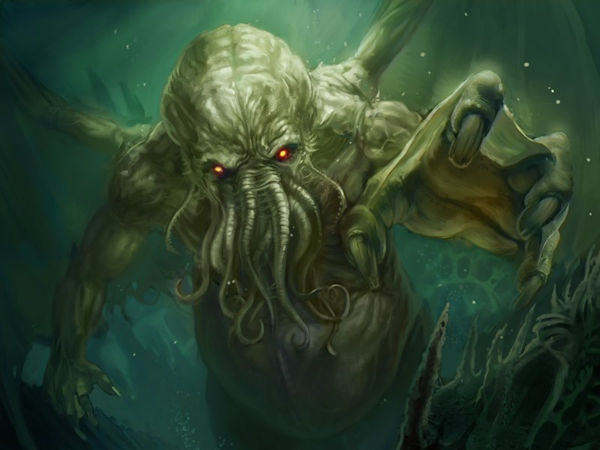
(In another odd parallel, the octopus is described in Hawaiian mythology as an alien being that escaped the destruction of a universe that predated our own.)
Lovecraft himself is a controversial figure; active during the early part of the 20th Century, he possessed abhorrent views on race and gender that were considered somewhat unusual even for his time. His life was a tragic one, a fraught childhood gave way to an adulthood wracked by mental illness and financial instability, ending in an early death, aged forty-six.
But Lovecraft’s influence on the genres of horror, sci-fi, and weird fiction cannot be denied. Generations of SFF fans have embraced and reimagined the worlds and beings Lovecraft invented. He was an influence on Alan Moore, Stephen King, and Neil Gaiman to name a few. Games based on his works have long been a staple of the RPG community. There are video games, ranging from older works such as Eternal Darkness to more recent offerings like The Sinking City. TV series, such as Stranger Things, drew inspiration from his work too. Even Hollywood has gotten in on the act with the 2019 psychedelic horror film The Color Out of Space.
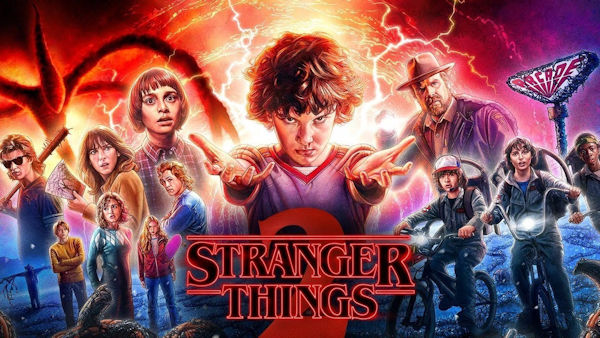
Though not the first person to write in this style, Lovecraft is the father of cosmic horror—a nihilistic genre based around the idea that the universe is vast, uncaring and hostile and humanity is as insignificant as a mote of dust. If and when the greater powers of this universe notice us, the results are rarely pleasant. Ghouls and ghasts devour human flesh. Mi-go put living human brains into metal canisters and take them back to the planet Yuggoth for unknown reasons. Shoggoths, Deep Ones, and Flying Polyps lurk in the forgotten corners of the Earth and may one day rise to exterminate us all.
Beyond Earth itself, alien gods rule the cosmos. Yog-Sothoth guards and embodies the gate of time and holds the key to universal truth. Shub-Niggurath seethes with unimaginable lusts and spawns terrifying children. Titanic entities dance, caper, and pipe tunelessly in the court of the ultimate god Azathoth, a blind and mindless entity that may have created us all.
Cthulhu isn’t the most powerful of these deities by any means and is in fact described as a priest of some kind. Lovecraft himself did not use the term Cthulhu Mythos to describe his cosmic myth-cycle, preferring the term Yog-Sothothery.
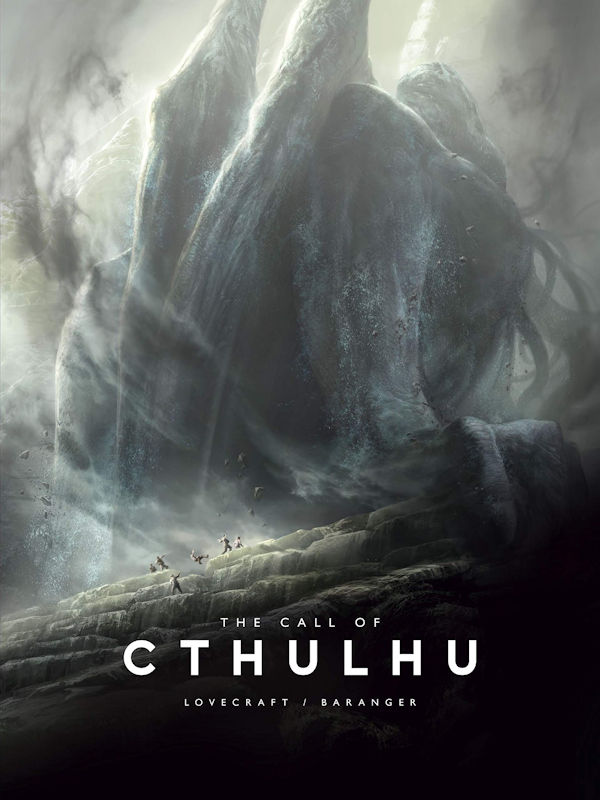 Lovecraft
also referenced other deities far more often than Cthulhu. But still, Cthulhu
has become the poster child for Lovecraft’s work. Perhaps because of his
distinctive appearance or because his story, The Call of Cthulhu, is so
dramatic and features a direct confrontation with the god himself. Perhaps also
because The Call of Cthulhu explicitly states Cthulhu will rise to end
the world and lead humanity into a new dark age of unrestrained slaughter and
wicked pleasures.
Lovecraft
also referenced other deities far more often than Cthulhu. But still, Cthulhu
has become the poster child for Lovecraft’s work. Perhaps because of his
distinctive appearance or because his story, The Call of Cthulhu, is so
dramatic and features a direct confrontation with the god himself. Perhaps also
because The Call of Cthulhu explicitly states Cthulhu will rise to end
the world and lead humanity into a new dark age of unrestrained slaughter and
wicked pleasures.
“…great Cthulhu was loose again, and ravening for delight!”
We can also credit a contemporary of Lovecraft, August Derleth, with coining the term Cthulhu Mythos and doing a lot of work to standardise and structure of this modern mythology. Though many Mythos fans dislike and decry Derleth’s more moralistic and Christianised view of Lovecraft’s creations.
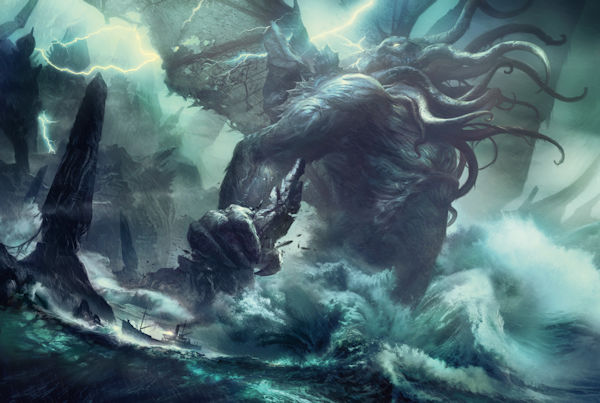
Inevitably, because Cthulhu is so well known in geek and gaming culture, there are now a host of cute or jokey recreations of his divinely disgusting form. Cuddly toys, picture books, musicals, pillows, mugs, t-shirts, dolls, candles, and more. The piece displayed above is just one more example of this trend.
Do you have any mythical creatures gracing your workspace? Let us know in the comments!
Fantasy-Faction does not claim copyright over any of the pieces whose images are displayed in this museum. If the original creators wish these images removed from our website, please contact Fantasy-Faction via our About Page.


I have the severed head of a Jabberwock for bouncing on my desk in times of frustration. (A healthier option than beating my own head against the desk.) Details on how to make one of your own are here (https://deborah.makarios.nz/hast-thou-slain-the-jabberwock-adventures-in-fantastical-taxidermy/) if anyone’s keen. Instructions and pictures are under a CC-BY-SA license, so help yourself.